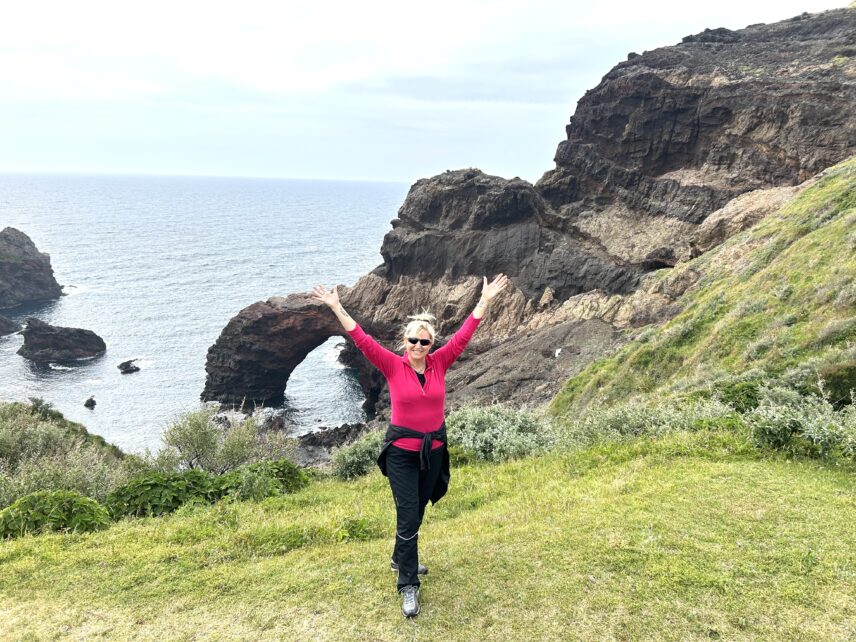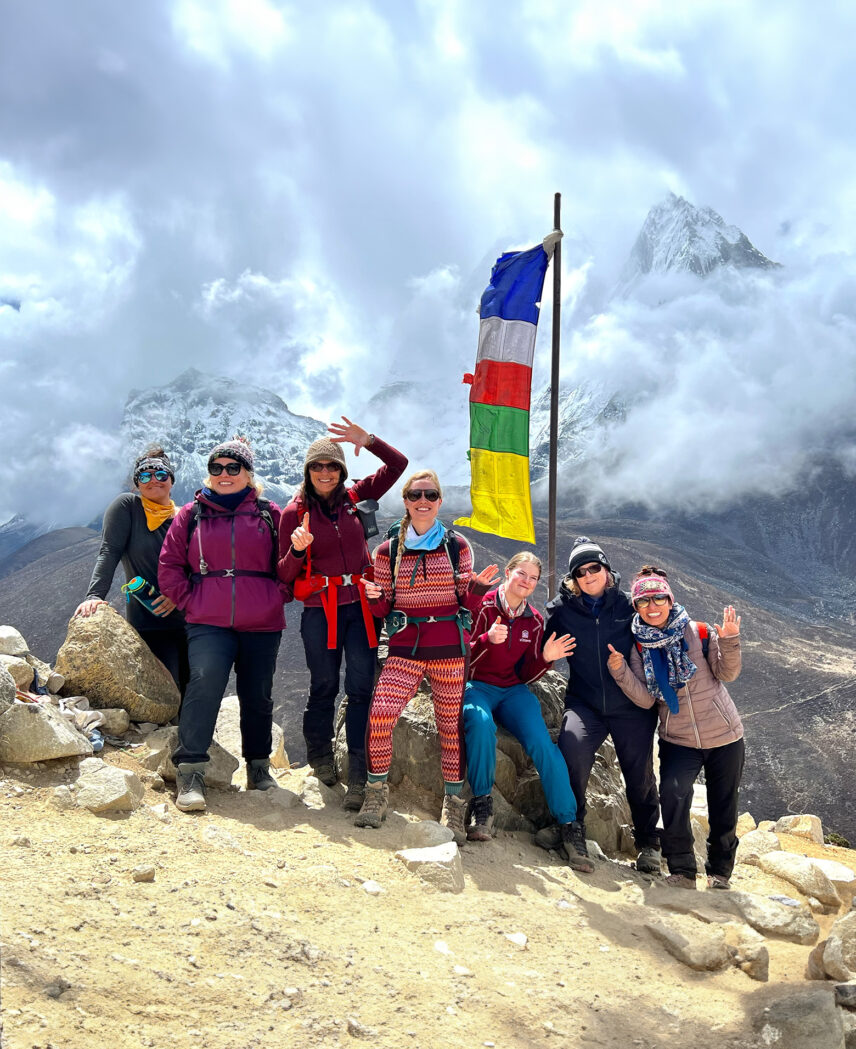I like to think of myself as an adventurous traveller, but I admit to being a little intimidated when I see the itinerary for Wild Women Expedition’s 12-day ‘Sacred Japan’ trip. First, we’re supposed to trek over the 2,600 foot Magome Pass on the ancient Nakasendo Trail between Kyoto and Tokyo. Then, there’s a hike in the Oki Islands along the edge of the 843 foot Matengai Cliff, followed by 20 miles of cycling on this wind and wave-sculpted archipelago in the Sea of Japan. I’m in decent physical shape, recovering from a knee injury, but I think I can handle it. After all, I walked the Camino de Santiago, swam with piranhas in the Amazon, and rode horseback up Cotapaxi Volcano in Ecuador. I can do this, right?
When I arrive in Tokyo, I meet the other women on this trip, a small tribe of seven from across the US and Canada. We’re all different ages and backgrounds; divorced, widowed, single and married, but within moments, there’s an immediate sense of connection. There’s something very special about travelling with a group of like-minded women. No subject is taboo, and no questions are asked when you take your sweater off for the fourth time in 10 minutes.
Within hours, there is a feeling of support and sisterhood among us. This strengthens throughout the trip, as we meet other women just like us. Wild Women has curated a unique itinerary that includes Japanese women in every experience, including tea farmers, restaurantours and tea ceremonies. We even bang the taiko drum with a group of Japanese women who keep the rhythm of their ancestors alive. Everywhere we go, women hug us, clasp our hands and we bow to each other, creating a bond of womanhood. Somehow, the fact that we don’t speak Japanese is irrelevant. As women, we are all connected through our smiles and stories.
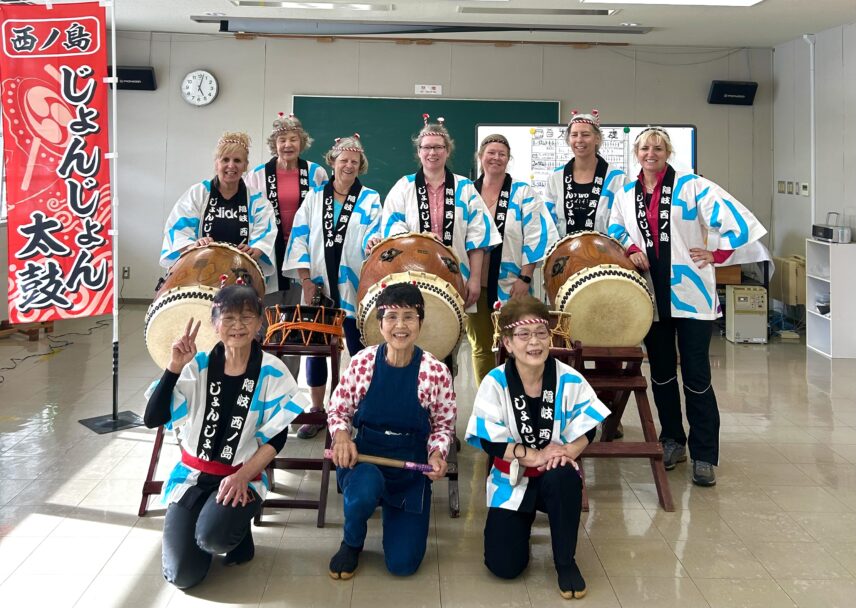
Three lessons from Japan
1. I’m in awe of the inner strength and courage of women
I’ve been on three Wild Women trips and there’s one thing I always notice: how courageous women are. When I meet Diana Mocha, 67, she shares memories of her husband, Ed, who suddenly passed away five years ago. I’m amazed when I find out is her only second solo trip, and her first with an all-women group. Already, she has ventured out on her own to find adventure in Tokyo. After the trip, she has plans to travel to Osaka and Hiroshima.
“I have to really push myself to get myself out there and rely on myself,” says Mocha, who’s from Toronto. “Being married for 44 years, with someone who was completely supportive, a rock, gives you so much confidence. When that rock is gone, you don’t know what you have to hold on to. What do I cling to? Myself.”
My 77-year roommate from Oregon, Alexis Hlavacek, says this is a special time of life for her.
“I think women are becoming more of a force and realizing that there is no ‘can’t’ in our vocabulary,” she says. “I don’t want to have any regrets at the end. I have to put myself out there and do things that make me happy. You have to shape your own life.”
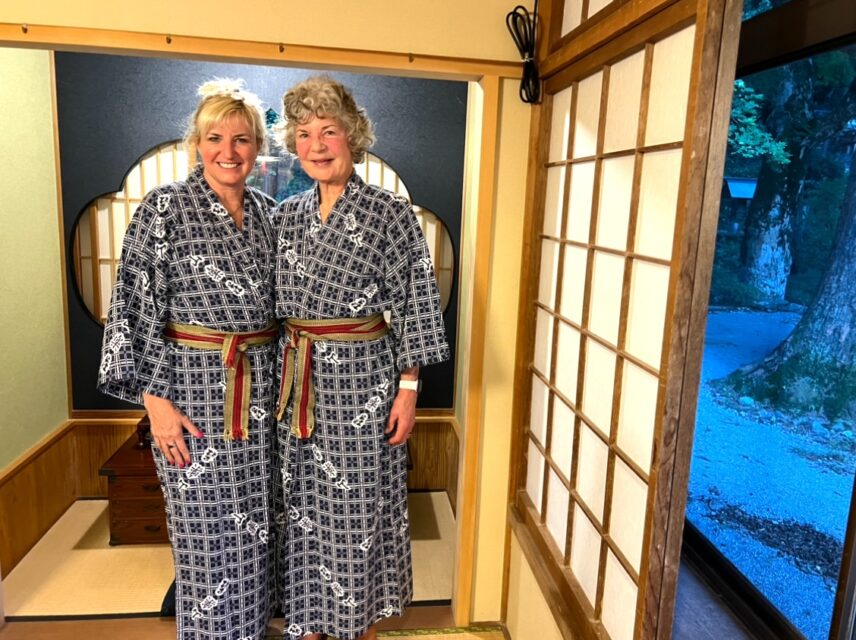
2. We define adventure on our own terms
This trip is multi-sport, including hiking, biking and ebiking, starting on the Nakasendo Samurai Trail, where Japanese Warriors walked about 400 years ago. Over 330 miles (530 km) long, it was established as a trade route between Kyoto and Edo (modern-day Tokyo) through Nagano’s mountains. There are 69 ‘post towns’ that served as rest stops for travellers. In Narai-juku (the 34th of the 69 towns), we hike through Tsumago to Magome. It’s incredibly scenic, with waterfalls and cobblestone trails but challenging.
Recovering from a knee injury, I’m not sure if I can handle the terrain and that 2,600-foot climb up the pass. But then I remember that this is MY Camino, not someone else’s. Not only do I find a new level of inner strength, but I feel a surge of endorphins from walking on this ancient pilgrimage route, sharing smiles with people along the way, and experiencing the feeling that comes from being in nature.
While my hike was only about 12 miles / 20 km through the mountains, it was extremely challenging and uphill! However, the beauty and fragrance of the cypress trees, Japanese umbrella pines and cedars will make you forget the pain in your calves. Afterwards, we spent the first night in Tsumago in a small inn, sleeping on a reed mat on the floor.
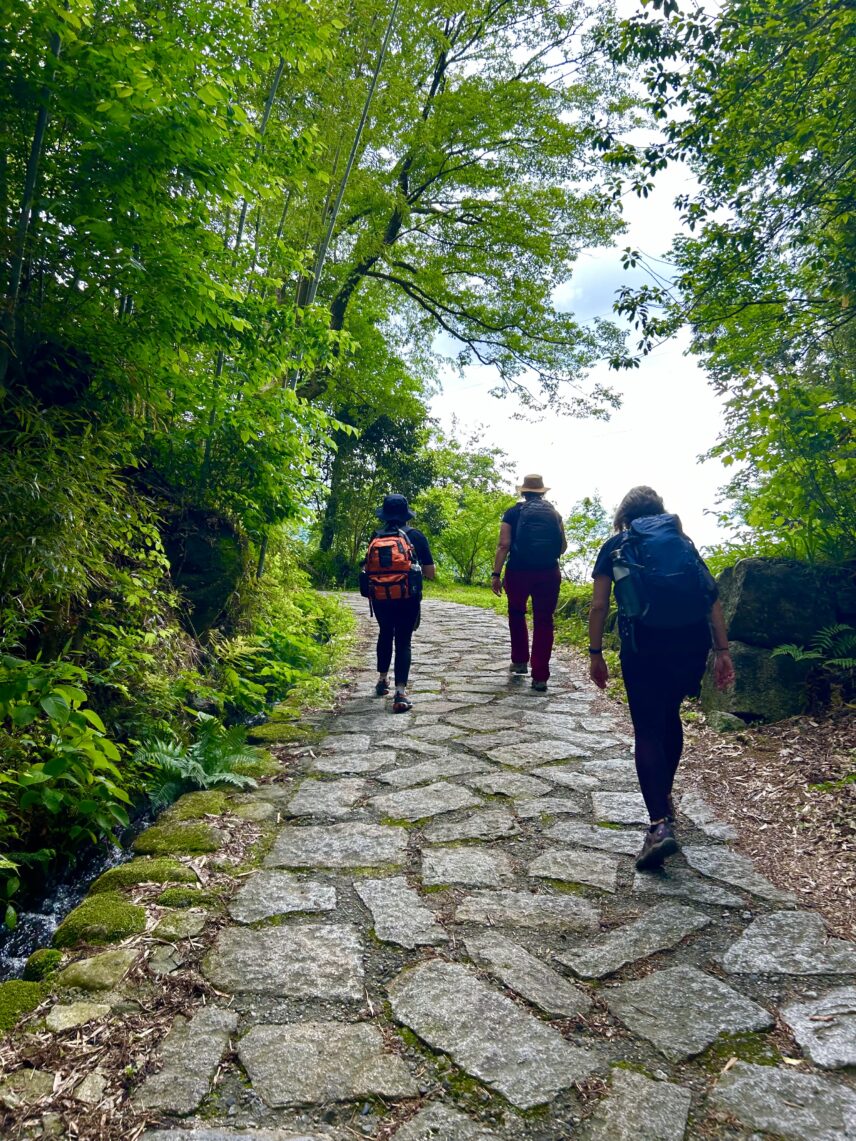
3. Women sustain traditions and rituals
Women do most tea ceremonies and highlight the values of harmony (wa), respect (kei), purity (sei) and peace (jaku). The tradition of a tea ceremony was originally imported from China in the 12th century and was only for the nobles. Now, it’s a chance to meet and get to know each other. At a tea ceremony in Kyoto, we learn how to make our own matcha tea, turn the bowl, sip from the other side, and listen to the sound of the water, all the while offering thanks to the gods.
One of the most memorable experiences on our trip was visiting the Ama divers in Toba, Japan. Reiko, a 92-year-old third-generation Ama diver, says her mother taught her to free-drive when she was 10. She recently retired at 82 and said she was never fearful of diving so far down in the water.
Food is another tradition, typically prepared by women. Coming from a world of processed, fast food, it’s a joy to see how meals are presented in Japan. From vending machines to train bento boxes organized into nine small treats to gourmet dinners, everything is prepared with care and precision. One of the most memorable meals is at Sanrakuso, a 13-room Japanese temple inn on Mount Daisen. This is the only ‘shukubo’ or temple in Daisen-ji. In an age-old tradition handed down over generations, our female chef creates astonishing vegetarian meals from plants in the nearby woods, like buckwheat.
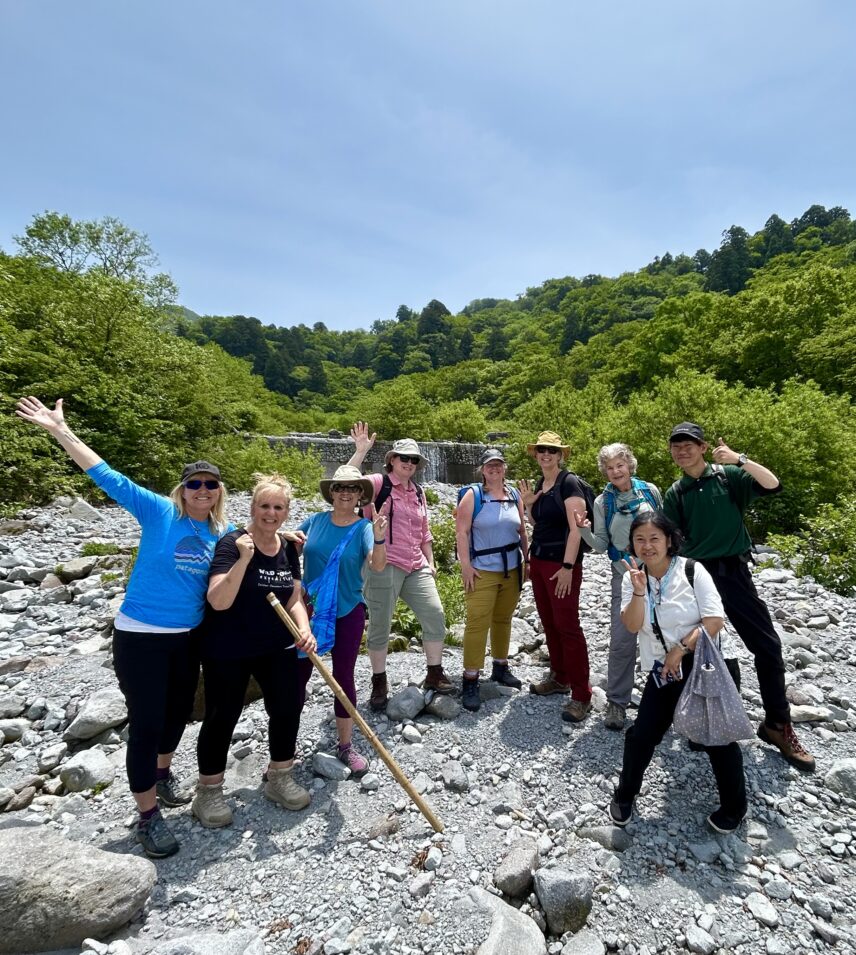
On our last night in Tokyo, we share the moments where we surprised ourselves. After making our way through fields, mountains and onsens, we’ve all learned new skills and have new memories that make us smile and laugh. Best of all, we’ve shown ourselves that we can embrace adventure on our own terms, whether it’s travelling solo, trying new foods or navigating Japan’s train system.
Even now, when I think about Japan, I remember the sound of the water. Water is about purification at temples, but it’s also about listening and being in the moment. Everywhere, there are watermills and shrines, hills with flooded rice terraces, and waterfalls in the forest. I can feel the warm water of the thermal baths and onsens rising up from the land, taste the matcha tea as water drips from the ladle, and enjoy the wet wind on my face on the Oki Islands. Water reminds me of the essence of Japan, of new adventures and new friends.
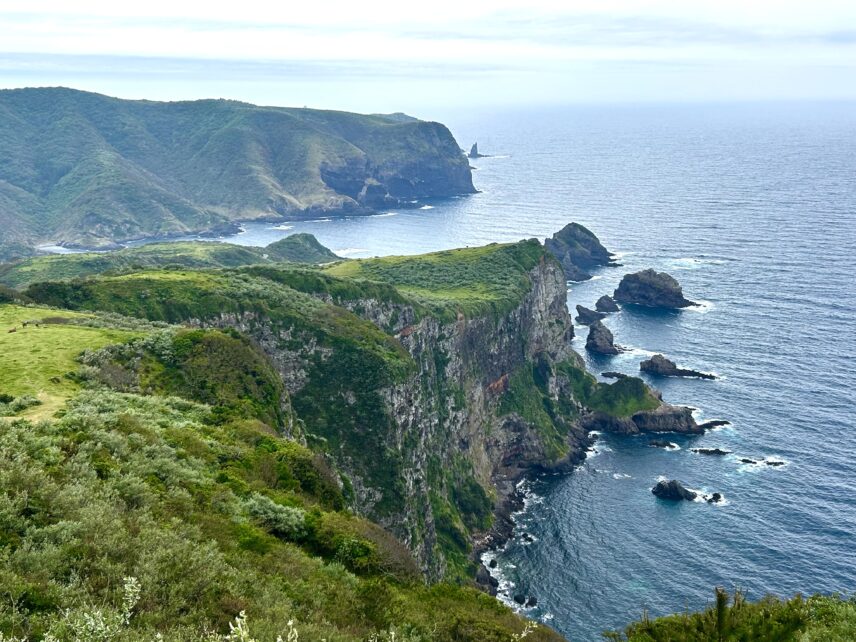
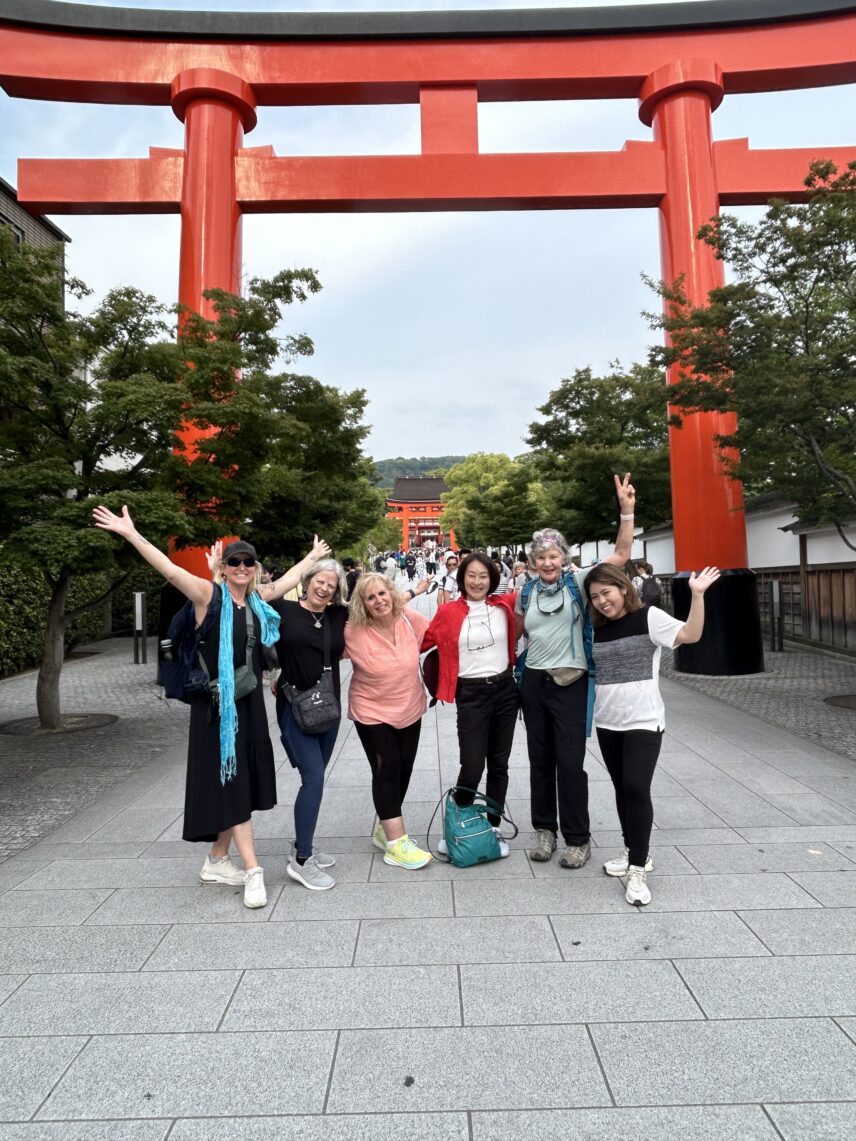
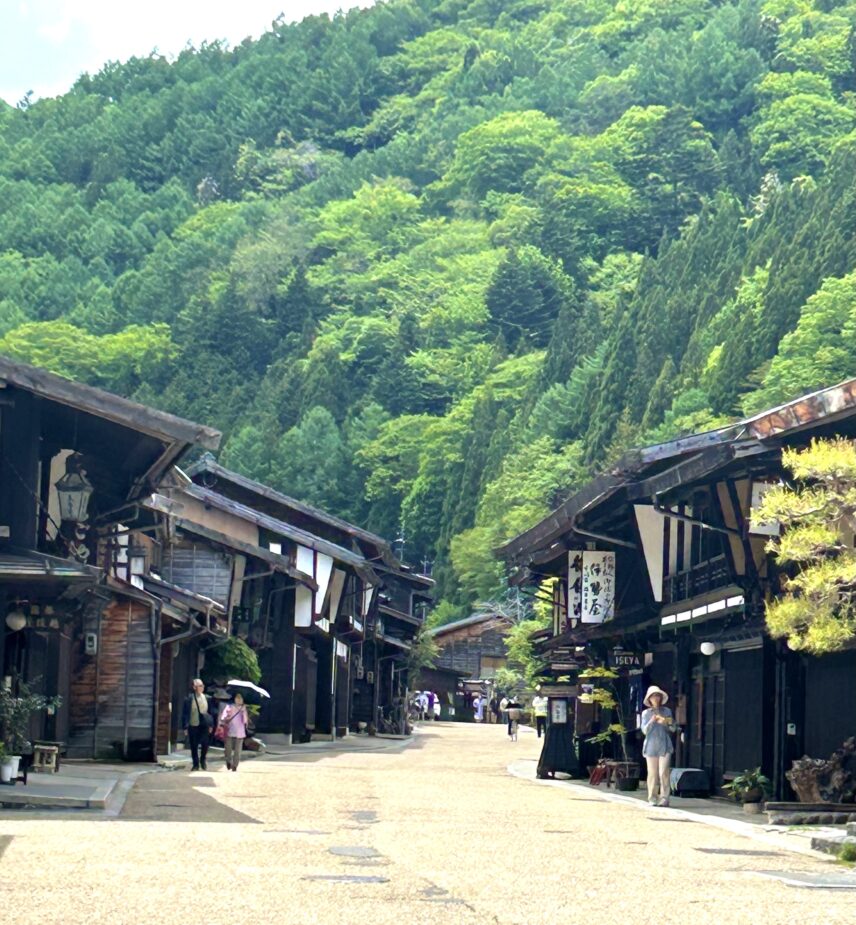
Tips to prepare for Japan
Japan is a place that will shift your perspective. On the advice of Wild Woman’s Jules Torti, I read Pico Iyer’s “A Beginner’s Guide to Japan”, which shares many of his observations about the little differences in Japanese culture. Not only did it stoke my curiosity before the trip, but it also helped me become more observant and appreciative during the trip.
1. Pack light for the days without your luggage: On this trip, you want to pack light because you’ll be carrying your clothes on your back for 3 days at a time. I bought a new 25L Gregory Backpack and packed an electrical converter, a light raincoat, my favourite Merrell hiking boots, sports bras and underwear, Smartwool Merino socks, sunglasses, sunscreen and layers. Bring one nice outfit for Kyoto/Tokyo, a light hoodie and sneakers. I brought my own pajamas but left my jeans, robe, slippers and bathing suit at home. You don’t need sandals or a second pair of hiking shoes.
2. Stretch before and after walking: Much of the Nakasendo Trail is uphill, so you’ll want to stretch before starting out. Hiking poles are also a good idea, especially for the steep uphills. Make sure you have well-worn hiking shoes and a good backpack.
3. Embrace the little differences: Several nights of the trip were spent in traditional inns with varying degrees of mattress, and the floor can be hard. This felt very authentic, but I relished the hotel bed for the remaining nights. If you’re sharing a room, know that most of the hotels don’t have a lot of storage space or shelves or bathroom doors that slide rather than close. The smart toilets are magical! I miss those warm seats!
4. Enjoy the food, but don’t expect gluten-free: For the first week of the trip, I was provided with gluten-free options but found this limited my culinary experience. I was told that finding gluten-free food in Japan is very hard. Instead, I asked for the regular menu and opted out of foods with gluten, also making it easier for the small inns.
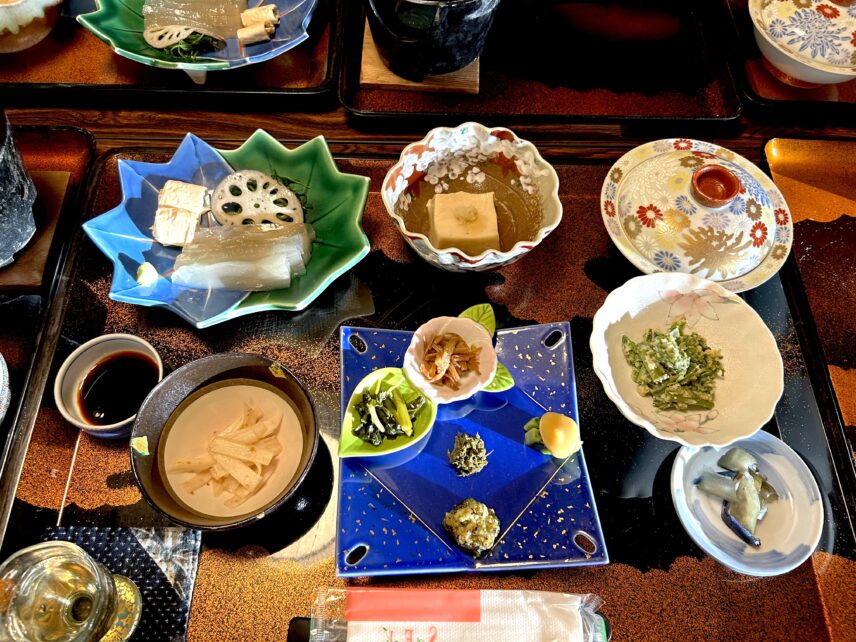
5. Don’t miss the onsen (and take the red door): In Japan, onsens (hot springs) are considered sacred and part of traditional Japanese culture and are often beautiful structures made from materials like marble, granite, and cypress wood. They are perfect for weary travellers who need to ease muscle tension and physical stress, while improving blood circulation, soothing one’s mind, and encouraging better sleep. My first onsen experience at Misasa Onsen, an 850-year-old sanctuary with an indoor pool and two outdoor pools, was magical. You’ll need to shower first and before leaving the onsen.
6. Have some cash on hand: The exchange rate is very good for Canadians and Americans. While you can use Wise for most purchases, you’ll want some cash for tipping the guides or small purchases. Bring a small change purse to hold coins for donations at temples.
How to get to Tokyo
I flew direct on a 14-hour flight from Toronto to Tokyo on Air Canada. I recommend upgrading at least on the way there, but I found the flight much easier than a short flight to Europe. Get there at least one day in advance.
Wild Women arranges a private pickup at the airport, but you can also take the Airport Limousine bus (about 35,000 yen one way). Make sure you have WhatsApp and an eSIM (electronic SIM card) app downloaded before you leave so that you can connect when you land.
Bio: Carolyn Ray is the CEO and Editor of JourneyWoman, the world’s first solo travel publication for women, established in 1994. She was a guest of Wild Women Expeditions, a partner in JourneyWoman’s Women’s Travel Directory. Read more about this trip here.
Thank you to Japanese guides Miko Asia, Yuka Hayafune and Sea Shibuya who kept us on and off the right trains, hiking paths and shared their culture with us.
All images captured by Carolyn Ray, CEO, JourneyWoman.
